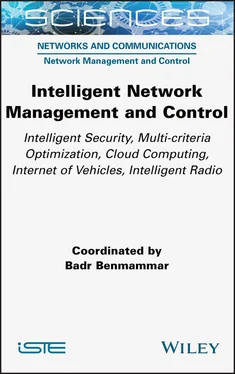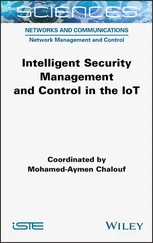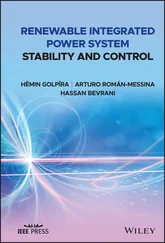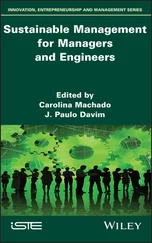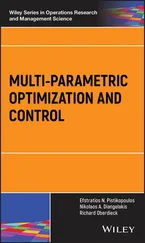Hoque, M.S. et al. (2012). An implementation of intrusion detection system using genetic algorithm. International Journal of Network Security & Its Applications (IJNSA) . AIRCC publisher, 4(2), 109–120.
Hu, J., Yu, X., Qiu, D., and Chen, H.H. (2009). A simple and efficient hidden Markov model scheme for host-based anomaly intrusion detection. IEEE Network , 23(1), 42–47.
Hwang, T.S., Lee, T.-J., and Lee, Y.-J. (2007). A three-tier IDS via data mining approach. Proceedings of the 3rd Annual ACM Workshop on Mining Network Data . ACM, San Diego.
Idris, N.B. and Shanmugam, B. (2005). Artificial intelligence techniques applied to intrusion detection. Annual IEEE India Conference (Indicon) . IEEE, Chennai.
Ingham, K., Somayaji, A., Burge, J., and Forrest, S. (2007). Learning DFA representations of HTTP for protecting web applications. Journal of Computer Networks , 51(5), 1239–1255.
Kalaivani, S., Vikram, A., and Gopinath, G. (2019). An effective swarm optimization based intrusion detection classifier system for cloud computing. 5th International Conference on Advanced Computing & Communication Systems (ICACCS) . IEEE, Coimbatore.
Kang, M.-J. and Kang, J.-W. (2016). Intrusion detection system using deep neural network for in-vehicle network security. PLOS ONE , 11(6), 1–17.
Khidzir, N.Z., Daud, K.A.M., Ismail, A.R., Ghani, M.S.A.A., and Ibrahim, M.A.H. (2018). Information Security Requirement: The Relationship Between Cybersecurity Risk Confidentiality, Integrity and Availability in Digital Social Media. Regional Conference on Science, Technology and Social Sciences (RCSTSS 2016) . 4–6 December 2016, Penang, Malaysia.
Kim, J., Kim, J., Thu, H.L.T., and Kim, H. (2016). Long short term memory recurrent neural network classifier for intrusion detection. International Conference on Platform Technology and Service (PlatCon) . IEEE, Jeju.
Kirdaa, E., Jovanovicb, N., Kruegelc, C., and Vigna, G. (2009). Client-side cross-site scripting protection. Computers & Security , 28(7), 592–604.
Kruegel, C., Mutz, D., Robertson, W., and Valeur, F. (2003). Bayesian event classification for intrusion detection. Proceedings of the 19th Annual Computer Security Applications Conference . IEEE, Las Vegas.
Kudłacik, P., Porwik, P., and Wesołowski, T. (2016). Fuzzy approach for intrusion detection based on user’s commands. Soft Computing , 20(7), 2705–2719.
Kumar, S., Krishna, C.R., and Solanki, A.K. (2018). A technique to resolve data integrity and confidentiality issues in a wireless sensor network. 8th International Conference on Cloud Computing, Data Science & Engineering (Confluence) . IEEE, Noida.
Landwehr, C. (2008). Cybersecurity and artificial intelligence: From fixing the plumbing to smart water. IEEE, Security and Privacy , 6(5), 3–4.
Leung, K. and Leckie, C. (2005). Unsupervised anomaly detection in network intrusion detection using clusters. Proceedings of the 28th Australasian Conference on Computer Science . Australian Computer Society Inc., Darlinghurst, 333–342.
Li, L., De-Zhang, Y. and Chen, F.-S. (2010). A novel rule-based Intrusion Detection System using data mining. 3rd International Conference on Computer Science and Information Technology . IEEE, Chengdu.
Liang, J. et al . (2019). A filter model for intrusion detection system in vehicle ad hoc networks: A hidden Markov methodology . Knowledge-Based Systems , 163, 611–623.
Liao, Y. and Vemuri, V.R. (2002). Use of k-nearest neighbor classifier for intrusion detection. Computers & Security , 21(5), 439–448.
Lippmann, R.P. and Cunningham, R.K. (2000). Improving intrusion detection performance using keyword selection and neural networks. Computer Networks , 34(4), 597–603.
Lunt, T. (1993). Detecting intruders in computer systems. Proceedings of the 1993 Conference on Auditing and Computer Technology . Baltimore Convention Center, Baltimore.
Lunt, T.F. (1990). Real-time intrusion detection expert system. Computer Science Lab., SRI International, Technical Report.
Mahoney, M.V. and Chan, P.K. (2001). PHAD: Packet header anomaly detection for identifying hostile network traffic [Online]. Available at: https://pdfs.semanticscholar.org/1505/f3658f5af7dff88e88d6a2b381de12e03036.pdf.
Mahoney, M.V. and Chan, P.K. (2002a). Learning models of network traffic for detecting novel attacks. Technical Report, Florida Institute of Technology, Melbourne.
Mahoney, M.V. and Chan, P.K. (2002b). Learning nonstationary models of normal network traffic for detecting novel attacks. Proceedings of the 8th ACM SIGKDD International Conference on Knowledge Discovery and Data Mining . ACM, Edmonton.
Menahem, E., Shabtai, A., Rokach, L. and Elovici, Y. (2009). Improving malware detection by applying multi-inducer ensemble. Computational Statistics & Data Analysis , 53(4), 1483–1494.
Miles, B., Shahar, A., Jack, C., Helen, T., Peter, E., Ben, G., Allan, D., Paul, S., Thomas, Z., Bobby, F., Hyrum, A., Heather, R., Gregory, C.A., Jacob, S., Carrick, F., Seán, Ó. h., Simon, B., Haydn, B., Sebastian, F., Clare, L., Rebecca, C., Owain, E., Michael, P., Joanna, B., Roman, Y. and Dario, A. (2018). The malicious use of artificial intelligence: Forecasting, prevention, and mitigation [Online]. Available at: https://arxiv.org/ftp/arxiv/papers/1802/1802.07228.pdf.
Mishra, A., Agrawal, A. and Ranjan, R. (2011). Artificial intelligent firewall. Proceedings of the International Conference on Advances in Computing and Artificial Intelligence . ACM, Rajpura/Punjab.
Moon, D., Im, H., Kim, I. and Park, J. H. (2017). DTB-IDS: An intrusion detection system based on decision tree using behavior analysis for preventing APT attacks. The Journal of Supercomputing , 73(7), 2881–2895.
Moore, T. and Anderson, R. (2012). Internet Security. The Oxford Handbook of the Digital Economy . Oxford University Press, Oxford.
Mukkamala, S. and Sung, A.H. (2003a). Artificial intelligent techniques for intrusion detection. International Conference on Systems, Man and Cybernetics . IEEE, Washington.
Mukkamala, S. and Sung, A.H. (2003b). A comparative study of techniques for intrusion detection. Proceedings of the 15th IEEE International Conference on Tools with Artificial Intelligence (ICTAI’03) . IEEE, Washington.
Mukkamala, S., Sung, A.H., and Abraham, A. (2005). Intrusion detection using an ensemble of intelligent paradigms. Journal of Network and Computer Applications , 28, 167–182.
Mutz, D., Robertson, W., Vigna, G., and Kemmerer, R. (2007). Exploiting execution context for the detection of anomalous system calls. Proceedings of the International Symposium on Recent Advances in Intrusion Detection . RAID, Gold Coast.
Novikov, D., Yampolskiy, R.V., and Reznik, L. (2006). Artificial intelligence approaches for intrusion detection. IEEE Long Island Systems, Applications and Technology Conference . IEEE, Long Island.
Peltier, T.R. (2010). Information Security Risk Analysis . CRC Press, Boca Raton.
Peng, K., Leung, V., Zheng, L., Wang, S., Huang, C., and Lin, T. (2018). Intrusion detection system based on decision tree over big data in fog environment [Online]. Available at: https://www.hindawi.com/journals/wcmc/2018/4680867/.
Ponkarthika, M. and Saraswathy, V.R. (2018). Network intrusion detection using deep neural networks. Asian Journal of Applied Sciences , 2(2), 665–673.
Quamar, N., Weiqing, S., Ahmad, Y.J., and Mansoor, A. (2016). A deep learning approach for network intrusion detection system. Proceedings of the 9th EAI International Conference on Bio-inspired Information and Communications Technologies (formerly BIONETICS) . ICST publisher, December 3–5, 2015, New York, USA, 21–26.
Читать дальше
